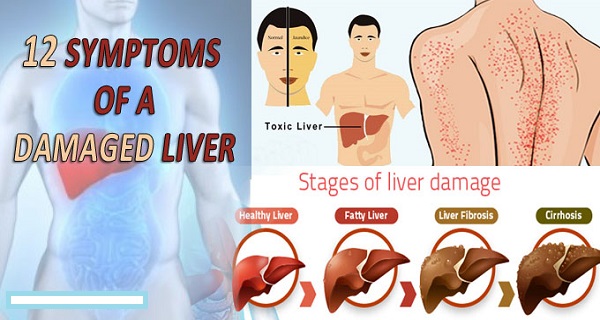Apart from being the largest solid organ in the body, the liver is also one of the vital organs for survival as a number of metabolic processes and bodily functions depend on it. The liver is located in the right upper quadrant of the abdomen and is partly covered by the ribs. Liver health is essential for proper body function, which means that a damaged liver can affect your overall health. Knowing the early signs of liver damage can help you take prompt action and reduce your risk of possible health complications.
There are a number of factors that contribute to liver disease, and, so far, medicine had identified more than 100 different kinds of liver disease including hepatitis, alcoholic liver disease, cirrhosis, and fatty liver, each of which manifests in a different way.
These are the early warning signs of a damaged liver:
#1 Fluid retention
One of the earliest sings of liver damage is fluid retention, predominantly in the feet and ankles. This condition can also be triggered by lymphatic system malfunction, heart failure, kidney issues as well as hormonal imbalance.
2# Upset stomach
When the liver is unable to eliminate toxins, common health complications include vomiting and nausea, which occurs as a result of constant metabolism and digestion changes. The symptoms often resemble other conditions such as food poisoning, migraines, vertigo, depression, early pregnancy, and motion sickness. Kidney problems can also give symptoms of this type.
3# Abdominal pain
A damaged liver can often trigger abdominal pain.
4# Digestion problems
An overwhelmed liver reduces bile secretion, which can lead to indigestion and diarrhea. Bile deficiency may also lead to intolerance of fatty foods and alcohol, irritable bowel syndrome, gallstones, abdominal bloating, and constipation.
5# Jaundice
Jaundice occurs as a result of drastic increase in blood bilirubin levels. This turns the sclera (the white part of your eyes), fingertips, tongue, and skin yellow. Jaundice may be caused by malfunction of the gallbladder or pancreas, thus consult your doctor.
#6 Abdominal changes
A damaged liver can trigger cramping or pain in the lower part of the abdomen, even bloating. An early symptom of liver damage is ascites or fluid accumulation in the abdominal cavity. Liver disease can lead to portal hypertension – high blood pressure in the blood vessels of the abdomen.
#7 Loss of appetite
Loss of appetite occurs because of bile deficiency. If the food you consume is not properly digested, it can lead to loss of appetite and considerable weight loss.
#8 Changes in urine color
A damaged liver can change urine color due to increased bilirubin levels in the blood. The urine becomes orange, amber, and brown.
#9 Constipation, intestinal bleeding, and diarrhea
The liver also takes part in blood clotting. When this function is compromised, intestinal bleeding diarrhea and constipation may occur.
#10 Changes in stool color
Bile deficiency can change stool color from typically brown to clay colored, pale yellow, or gray. If this is only temporary, it shouldn’t be a cause of worry. However, if it persists, it’s a red alert to see a doctor.
#11 Increased skin itching
Compromised liver function affects skin health too. The skin becomes more sensitive; it itches and flakes more often and becomes hypersensitive to touch. Bruising and increased vein visibility is also possible. Keeping your skin moist can help, but only temporarily.
#12 Fatigue and overall weakness
When the liver is damaged, the body works harder to convey all the metabolic processes, which means it easily gets tired and needs more rest. The toxins that remain in the blood because they can’t be eliminated by the liver also contribute to this.
If you experience any of these symptoms, consult a doctor immediately.
The video below can help you optimize your liver function with simple lifestyle and dietary changes.
